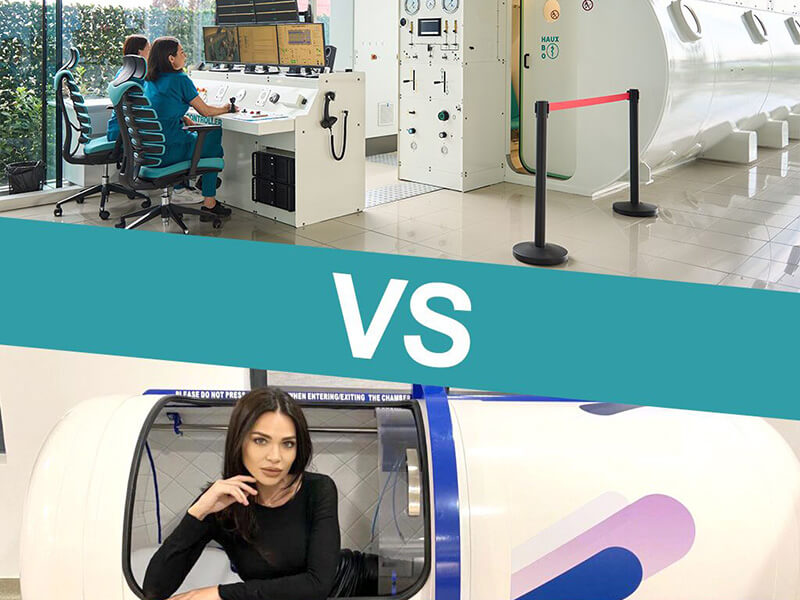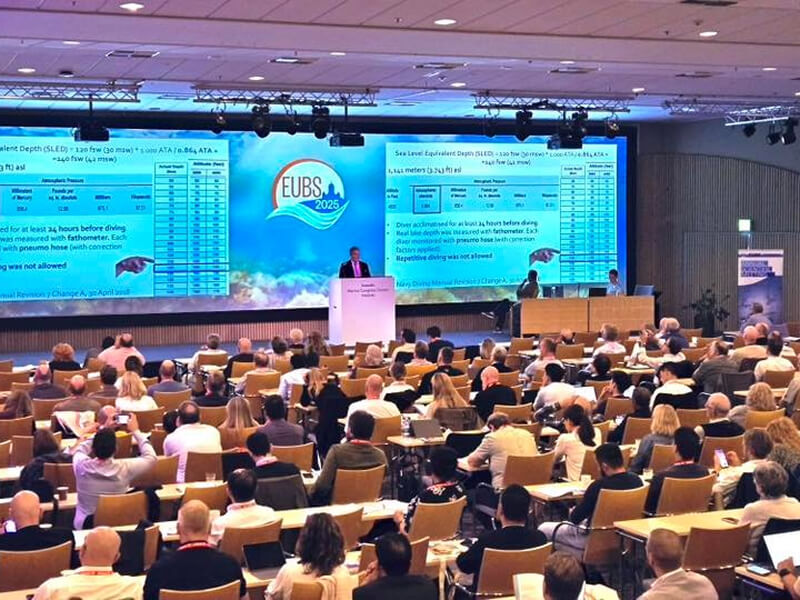
Article reviewed by: Dr. Sturz Ciprian, Dr. Tîlvescu Cătălin and Dr. Alina Vasile
Hyperbaric therapy in the recovery of sports injuries
In performance sports, the body is subjected to a high degree of physical stress, which leads to an increased risk of injury. More than half of athletes experience at least one injury each year. Sports injuries can be of many types, from muscle strains, ligament injuries, tendon tears, to bone fractures, fatigue and muscle pain.
Popular treatment options include rest, ice, compression, bandaging the affected area, physical therapy, and medication such as pain relievers or anti-inflammatories. But full recovery takes weeks or months, and for athletes every day they can't train or compete is crucial.
Due to the benefits reported in sports medicine, hyperbaric oxygen therapy (HBOT) has become increasingly used and recommended in the treatment of specific conditions athletes. Recent studies have shown that HBOT helps reduce recovery time by up to 70% when combined with physiotherapy sessions.
Healing stages of sports injuries by hyperbaric therapy
Any injury, from a simple injury to complex fractures, essentially involves damage to cells. The body recovers by repairing these cells, following a 4-stage healing process.
- Hemostasis (0 - a few hours after the injury): In this stage, the wound is closed by blood clotting, with the help of platelets and fibrin that form a clot to seal the affected area.
- Inflammation (1-3 days): The immune system kicks in to protect the affected area and eliminate damaged cells, pathogens and bacteria. Swelling, redness and warmth may occur around the affected area.
- Proliferation (4-21 days): Damaged tissues are rebuilt with new tissue made of collagen and extracellular matrix. The wound contracts and new blood vessels form to ensure adequate tissue oxygenation.
- Maturation/ remodeling (21 days - 1 year): In the final stage, the lesion is completely healed and scars form. Collagen, the main structural protein in connective tissues, regenerates and strengthens so that the tissue formed is strong and functional.
Oxygen plays a crucial role in each of these stages. Oxygen therapy helps deliver oxygen to the cells to support and accelerate the natural healing process.
How does hyperbaric therapy work in the recovery of sports injuries?
During the therapy, the patient is taken to a hyperbaric chamber, which is pressurized to a maximum of 3 absolute atmospheres (ATA), where he will inhale pure oxygen (100%). Therefore, the level of oxygen in the blood will increase up to 20 times, being diffused much more easily in the tissues deprived of oxygen, accelerating their healing.
The benefits of hyperbaric therapy in treating sports injuries:
- Reduces inflammation in the body
- Accelerates the healing process
- Improves vascular flow
- Stimulates the production of stem cells
- Accelerates tissue regeneration
- Reduces muscle and skin tissue scars.
Soft tissue injuries treated by hyperbaric therapy
Hyperbaric oxygen therapy is an effective adjunctive treatment for soft tissue injuries. A study published in 2011 in the journal Therapeutic Advances in Musculoskeletal Disease, HBOT has been shown to help reduce inflammation and speed up the recovery process for muscle and ligament injuries.
The effects of hyperbaric therapy are multiple: it reduces hypoxia by improving the degree of tissue oxygenation and stimulates blood flow in the affected area. HBOT also reduces edema by decreasing inflammatory cytokine levels. Moreover, this therapy supports the formation of new blood vessels through angiogenesis and stimulates the proliferation of fibroblasts, with a role in collagen production and cell regeneration, essential processes in soft tissue healing.
Bone fractures, treated by hyperbaric therapy
Hyperbaric therapy (HBOT) is a complementary therapeutic method in the process of bone healing and regeneration after fractures. Similar to the wound healing process, HBOT increases the supply of oxygen to the tissues around the fracture to support the healing process and speed recovery time. Results of a study published in 2007 in the journal Connective Tissue Research demonstrated that hyperbaric therapy stimulates the production of osteoblasts, specialized cells formed from stem cells, which have the role of forming bone tissue. It also contributes to increasing the production of collagen fibers, with a role in strengthening bones and joints.
Brain injuries, treated by hyperbaric therapy
According to a study published in 2015 in the journal Medical Gas Research , hyperbaric oxygen therapy has been shown to be beneficial in symptom relief and recovery in patients suffering from traumatic brain injury. After a brain injury, the body activates the immune system to repair the damage. Hyperbaric oxygen therapy has the ability to stimulate the immune system, to accelerate the body's healing processes.
HBOT promotes increased blood flow and oxygen circulation in the contusion area. It promotes tissue regeneration and prevents cell death. In addition, it helps reduce inflammation and pain associated with brain injuries.
Improving athletic performance through hyperbaric therapy
A new study published in 2022 in the journal Sports Medicine - Open, attests to the positive effects of hyperbaric therapy on the sports performance of middle-aged athletes. HBOT increases the mass and function of mitochondria, the cells that are responsible for producing energy in the body through cellular respiration. This leads to increases in VO2max (a measure of the body's ability to use oxygen) and VO2AT (the point at which the body's oxygen uptake plateaus during exercise).
At the Hyperbarium Clinic the patient benefits from complex and personalized consultation and treatment, being monitored by specialized medical staff.
Appointments can be made here.
Sources:
https://www.ncbi.nlm.nih.gov/pmc/articles/PMC3382683/
https://pubmed.ncbi.nlm.nih.gov/17653977/
https://www.ncbi.nlm.nih.gov/pmc/articles/PMC4547434/
https://sportsmedicine-open.springeropen.com/articles/10.1186/s40798-021-00403-w




